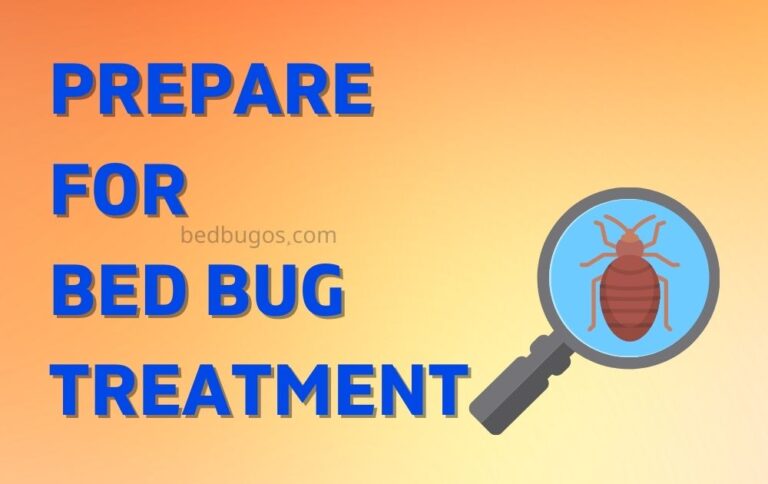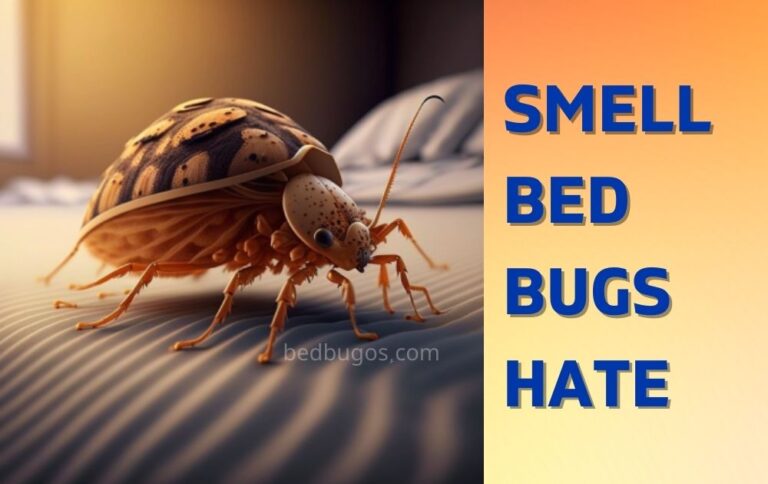What Attracts Bed Bugs Most? [5 Things In Homes]
![What Attracts Bedbugs Most? [Answered]](https://lyssfits.com/wp-content/uploads/2022/12/What-Attracts-Bedbugs-Most-Answered.jpg)
Bedbugs are tiny pests that can cause big problems for homeowners. These tiny insects are notorious for their ability to multiply quickly and for their love of feeding on human blood. While bedbugs were once a rare sight, they have become much more common in recent years, thanks to increased travel and the resurgence of these pests.
What attracts bedbugs most is the scent of human sweat and body heat. They are also attracted to other scents such as perfumes, deodorants, and soaps. Bedbugs are often found close to areas where people sleep or spend a lot of time relaxing, such as beds, sofas, and chairs.
In this article, we will explore what attracts bedbugs most, so you can protect your home from these pesky pests.
What Attracts Bedbugs Most?
There’s nothing quite as unsettling as finding out you have bedbugs. These pesky critters are not only difficult to get rid of, but they can also cause a lot of anxiety and discomfort. If you’re dealing with a bedbug infestation, you’re probably wondering what attracts them in the first place. Here are some of the most common bedbug attractants:
Clutter:
Clutter is one of the most attractive things to bedbugs, as it provides them with plenty of hiding spots. Bedbugs are notorious for hiding in tiny crevices and cracks, so a cluttered home with lots of items stacked up against walls and piled high on the floor is like a welcome mat for these pests. They can easily crawl into the piles of clothing, linens, and furniture and hide out until it’s time to feed.
When you have clutter in your home, you are providing bedbugs with the perfect environment for them to thrive. They can multiply quickly, and before you know it, you will have a full-blown bedbug infestation on your hands. Additionally, clutter makes it much harder to spot bedbugs, which can make it more difficult to detect and treat an infestation.
To minimize your risk of bedbugs, it’s important to keep your home as clean and organized as possible. Keep items stored neatly in closets and drawers, and avoid piles of clutter that could be harboring bedbugs. If you do have clutter, it’s a good idea to take the time to sort through it and remove anything that is not needed, as this can help to reduce the risk of bedbugs in your home.
Darkness:
Darkness plays a crucial role in attracting bedbugs. Bedbugs are nocturnal creatures and they thrive in dark, quiet environments where they can feed and reproduce without interruption. These pests are most active at night and are attracted to dark, secluded areas like cracks, crevices, and other tight spaces where they can hide during the day and come out to feed at night.
They are especially drawn to spaces near the beds and bedding of their human hosts, where they can easily access their food source. By understanding that bedbugs are attracted to darkness, homeowners can take steps to reduce their risk of a bedbug infestation, such as keeping their bedrooms well-lit, sealing cracks and crevices, and using bedbug-proof covers to protect their beds and bedding. The key to avoiding bedbug infestations is to eliminate their hiding places, making it harder for them to access the shelter and food they need to survive.
Heat:
Heat is one of the most significant factors that attract bedbugs. These tiny pests are known for their ability to detect and seek out sources of heat, which are typically associated with their preferred food source, humans. This means that bedbugs often congregate near radiators, baseboards, and other sources of warmth in homes and buildings. The heat from these sources creates a warm environment in that bedbugs thrive, making it easier for them to locate their food and reproduce.
It’s also worth noting that heat plays an important role in bedbug extermination. Pest control professionals often use heat treatments to kill bedbugs, as the high temperatures are lethal to these pests and their eggs. This method is particularly effective in removing bedbugs from homes and buildings that have become infested, as it eliminates all life stages of the bedbug population, including adult bedbugs, nymphs, and eggs.
Blood:
Blood is the main attraction for bedbugs, as it is their primary source of food. Bedbugs are nocturnal insects that feed on the blood of warm-blooded animals, including humans. They are attracted to areas where people sleep because they provide a convenient source of food. The bedbug’s proboscis, a straw-like mouthpart, is used to pierce the skin and draw blood.
Bedbugs can feed for up to ten minutes, taking in enough blood to double their body weight. This feeding cycle is repeated every five to ten days, and over time, a population of bedbugs can grow quickly. The presence of bedbugs in a home can be a major inconvenience, as they can cause uncomfortable bites and cause stress and anxiety for homeowners.
Carbon Dioxide:
Carbon Dioxide is a crucial factor in attracting bedbugs to humans. Bedbugs have a keen sense of smell that allows them to detect the presence of carbon dioxide from a distance, which is a clear indication of a potential meal. As humans exhale carbon dioxide, bedbugs are drawn to the source and are often found near human sleeping areas.
Bedbugs are most active at night when people are asleep, as this is when they are most likely to detect the carbon dioxide that is being exhaled. This is why bedbugs are often found in beds, sofas, and other furniture where people frequently spend time resting. The attraction to carbon dioxide is an instinct for bedbugs, as it helps them to find a food source and survive. Understanding the attraction to carbon dioxide is crucial in understanding the behavior of bedbugs and in effectively eliminating them from your home.
Bed bugs can be saw at night with the help of a flashlight.
Odor:
Odor plays a significant role in attracting bedbugs to a location. They are highly sensitive to certain scents, particularly the scent of human sweat. This is why bedbugs are often found near areas where people sleep or spend a lot of time relaxing, such as beds, sofas, and chairs.
When a person lies down in these areas, their body heat and sweat create an ideal environment for bedbugs to thrive. This also makes these pests difficult to eradicate, as they are constantly being drawn back to these locations by the scent of human sweat. Additionally, bedbugs can also be attracted to other scents such as perfumes, deodorants, and soaps, which can also contribute to their presence in a home.
This highlights the importance of regularly washing bedding and vacuuming any affected areas to remove any traces of these scents, making it less appealing to bedbugs. In short, odor plays a crucial role in attracting bedbugs, and by reducing and controlling the sources of these scents, you can help reduce the risk of a bedbug infestation in your home.
FAQ’s
Bed bugs do not have a strong sense of smell, but they are attracted to the carbon dioxide and body heat that humans emit. They are also attracted to the body odor of their hosts, which can vary based on factors such as diet, hygiene, and genetics. Some research has suggested that certain pheromones produced by bed bugs may also play a role in attracting them to their hosts.
Yes, Bed bugs do have a preference for a certain blood group which is type O. They will feed on the blood of any warm-blooded animal, including humans, birds, and mammals. However, some research has suggested that bed bugs may be more attracted to certain blood types over others, due to the presence of certain chemicals or proteins in the blood.
Bed bugs do not have a specific attraction to any one type of fabric or material, but they are often associated with older, cluttered, and infrequently cleaned environments. The reason why bed bugs are often associated with older, cluttered, and infrequently cleaned environments is that these types of environments provide ideal hiding spots for bed bugs and make it easier for them to go undetected.
Let’s Sum Up What Attracts Them Most:
Bedbugs are a common pest that can be difficult to get rid of once they’ve taken up residence in your home or business. Knowing what attracts bedbugs is essential for preventing an infestation. Keep your home or business clean and clutter-free, inspect secondhand furniture before bringing it into your home, and inspect hotel rooms for signs of bedbugs before settling in for the night. With these simple steps, you can help keep your home or business free from bedbugs.

![Where To Sleep If You Have Bed Bugs Infestation? [With Solutions]](https://lyssfits.com/wp-content/uploads/2023/07/Where-To-Sleep-If-You-Have-Bed-Bugs-Infestation-768x484.png)
![Can Bed Bugs Bite Through Clothes? [Answered]](https://lyssfits.com/wp-content/uploads/2023/07/Can-Bed-Bugs-Bite-Through-Clothes_-Explained-768x484.jpg)


![How Long Can a Bed Bug Live Without Food? [Tolerance]](https://lyssfits.com/wp-content/uploads/2022/12/How-Long-Can-a-Bed-Bug-Live-Without-Food-Answered-768x484.jpg)
![16 Reasons : Why Would Bed Bugs Be In The Bathroom ? [Explained]](https://lyssfits.com/wp-content/uploads/2022/12/16-Reasons-Why-Would-Bed-Bugs-Be-In-The-Bathroom-Explained-768x484.jpg)